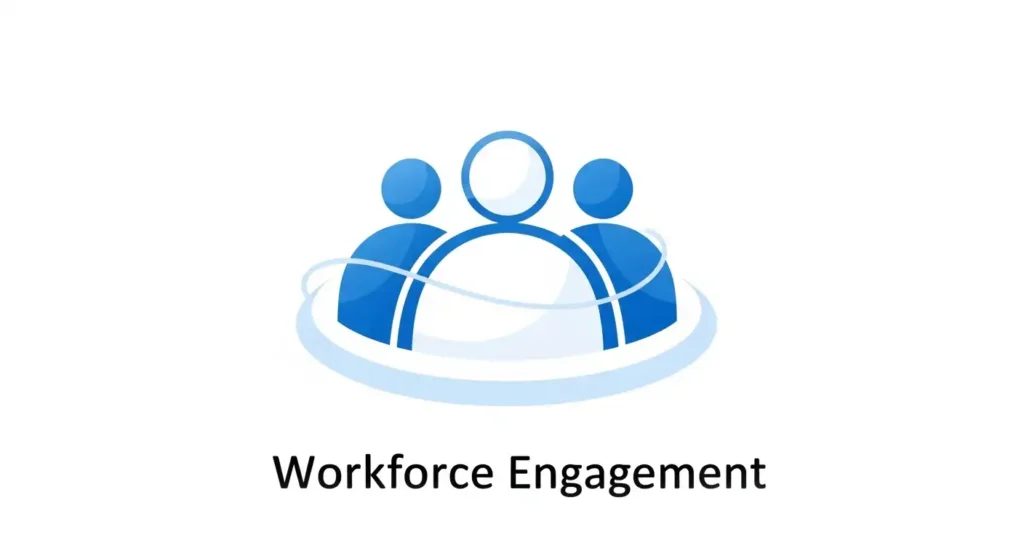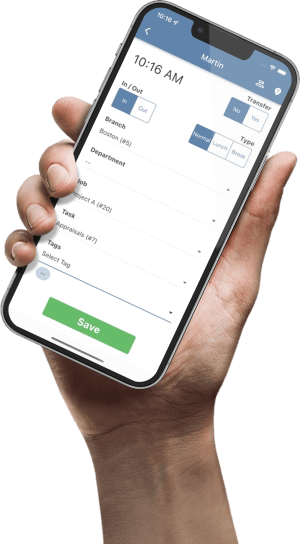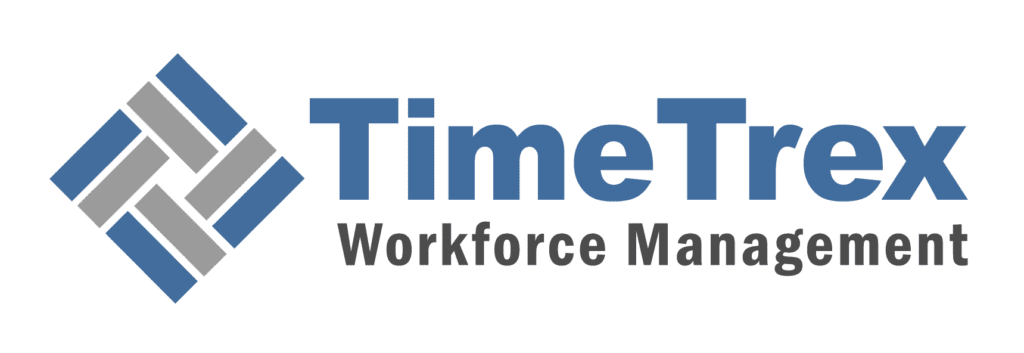
Workforce Engagement
Understanding and improving employee engagement is no longer just an HR metric—it's a critical driver of business performance, profitability, and sustainable growth. This comprehensive analysis explores the profound impact of employee engagement, the current state of the U.S. workforce, and a strategic framework for HR managers to measure and enhance workforce commitment. For HR leaders, mastering the levers of employee engagement is the key to unlocking productivity and retaining top talent in today's competitive landscape.
TL:DR
Employee engagement—the psychological investment an employee has in their work—is at a decade-low of 31% in the U.S., costing the economy an estimated $1.9 trillion annually in lost productivity. This disengagement crisis is a major threat to business performance. However, companies with highly engaged teams are 23% more profitable, have 18% higher sales, and experience significantly lower turnover and absenteeism. The single most important factor influencing engagement is the employee's direct manager, who accounts for 70% of the variance in team engagement. To solve this, leadership must treat engagement as a core business KPI, invest heavily in training managers to be effective coaches, establish clear employee expectations, and act on employee feedback. Embracing flexibility and purpose-driven work is essential for future success.
In This Article
- The Anatomy of Employee Engagement
- The Strategic Imperative: Quantifying the Business Impact
- The Current Landscape: A 2024-2025 Statistical Analysis
- The Levers of Engagement: A Deep Dive into Key Drivers
- A Framework for Action: Measuring and Improving Engagement
- Engagement in Practice: Lessons from Industry Leaders
- The Future of Engagement: Navigating the New World of Work
- Conclusion and Strategic Recommendations
The Anatomy of Employee Engagement
Defining Engagement: Beyond the Buzzwords
The term "employee engagement" is often used loosely, but it has a precise meaning critical for strategic action. Organizational scholar William Kahn defined engagement as the "harnessing of organization members' selves to their work roles," where people express themselves physically, cognitively, and emotionally. This deep personal investment is what leads to discretionary effort—the willingness to "go the extra mile." For practical purposes, Gallup categorizes the workforce into three distinct tiers based on their level of engagement:
- Engaged Employees: These individuals are passionate about their work and drive innovation. They act like psychological "owners" and are committed to the company's success.
- Not Engaged Employees: This group is psychologically detached. They put in their time but lack energy and passion, essentially "going through the motions."
- Actively Disengaged Employees: These employees are not just unhappy; they are resentful and can be toxic to the work environment, undermining the efforts of their colleagues.
The Psychological Core: Vigour, Dedication, and Absorption
A more rigorous academic model defines work engagement as a positive state of mind characterized by three core dimensions, which are the conceptual opposite of burnout:
- Vigour: High levels of energy, mental resilience, and a willingness to invest significant effort in one's work.
- Dedication: A profound sense of significance, enthusiasm, inspiration, and pride derived from one's job.
- Absorption: A state of being fully concentrated and happily engrossed in work, where time passes quickly. This is closely related to the psychological concept of "flow."
Critical Distinctions: Engagement vs. Satisfaction vs. Motivation
Confusing engagement with job satisfaction or motivation leads to ineffective strategies. An employee can be satisfied with their pay and work conditions but not engaged enough to innovate or provide exceptional service. Satisfaction is transactional ("How happy are you?"), whereas engagement is relational ("How invested are you?"). The following table clarifies these crucial differences.
| Concept | Definition | Nature | Key Question | Example |
|---|---|---|---|---|
| Employee Engagement | The psychological investment (cognitive, emotional, physical) in one's work and organization. | Relational, Motivational | "How invested are you?" | "I feel a deep sense of purpose and strive to help the company succeed." |
| Job Satisfaction | Contentment with the terms and conditions of one's job (e.g., pay, environment). | Transactional, Attitudinal | "How happy are you?" | "I am content with my pay, benefits, and work environment." |
| Motivation | The internal or external drive to perform a task or achieve a goal. | Driver of Action | "Why do you work?" | "I work because I find the task inherently interesting (intrinsic) or because I will get a bonus (extrinsic)." |
Theoretical Foundations: Understanding the "Why"
To foster engagement, leaders must understand its psychological roots. Self-Determination Theory (SDT) provides a powerful framework, positing that all humans have three innate psychological needs:
- Competence: The need to feel effective and master challenges.
- Autonomy: The need to feel in control of one's own behaviors and goals.
- Psychological Relatedness: The need to feel connected to others.
When a work environment satisfies these three needs, it fuels the intrinsic motivation that is the wellspring of true, sustainable employee engagement.
The Strategic Imperative: Quantifying the Business Impact
Employee engagement is not a "feel-good" initiative; it is a leading indicator of financial performance. An extensive Gallup meta-analysis covering 2.7 million employees provides definitive proof: business units in the top quartile of engagement more than double their odds of success compared to those in the bottom quartile.
Highly engaged teams outperform their peers in profitability.
Engaged employees are far more likely to stay with their organization.
Happy employees lead to happy customers, boosting ratings.
The Profitability Dividend and Productivity Multiplier
The financial returns on a highly engaged workforce are substantial. When comparing top-quartile business units with their bottom-quartile counterparts, the performance gap is stark:
- Profitability: Highly engaged units achieve 23% higher profitability.
- Productivity: Engaged teams demonstrate 18% higher productivity in sales and 14% higher productivity in production roles.
The War for Talent: Engagement as a Retention and Attraction Strategy
In a competitive labor market, engagement is a powerful tool for retaining top talent.
- Retention: In high-turnover organizations, highly engaged business units experience 21% less turnover. In low-turnover organizations, the effect is even more profound, with 51% less turnover.
- Absenteeism: Highly engaged teams experience 78% less absenteeism than their disengaged counterparts.
The Customer Experience Connection
Engaged employees create happy customers. The data shows that top-quartile engaged business units achieve 10% higher customer loyalty and engagement scores. A positive internal culture radiates outward, strengthening customer relationships and driving organic growth.
Broader Organizational Health Indicators
Beyond profit, engagement is a potent risk mitigation strategy. The following table summarizes the quantifiable performance differences, presenting a clear business case for investing in employee engagement.
| Business Outcome Metric | Performance Difference (Top vs. Bottom Quartile) |
|---|---|
| Profitability | +23% |
| Productivity (Sales) | +18% |
| Customer Loyalty | +10% |
| Employee Turnover (Low-Turnover Org.) | -51% |
| Absenteeism | -78% |
| Safety Incidents | -64% |
| Quality Defects | -41% |
The Current Landscape: A 2024-2025 Statistical Analysis
Global and U.S. Engagement Levels: A Decade-Low Warning
Recent data reveals a troubling decline in employee engagement. In the U.S., engagement fell to 31% in 2024, its lowest level in a decade. Globally, the situation is even more dire, with only 21% of employees engaged. This means a staggering 79% of the global workforce is either not engaged or actively disengaged. The decline from the 2020 peak of 36% in the U.S. equates to about 8 million fewer engaged employees.
Global Employee Engagement Snapshot
Dissecting the Decline: Key Engagement Elements in Crisis
The decline is driven by a sharp deterioration in fundamental aspects of the employee experience, pointing to a failure in management to adapt to new work realities. The most significant drops are in:
- Clarity of Expectations: Only 46% of U.S. employees strongly agree they know what is expected of them, a 10-point drop since 2020. This is a primary source of anxiety and inefficiency.
- Feeling Cared For: The sense of psychological safety has weakened, with only 39% of employees feeling that someone at work cares about them as a person, down from 47%.
- Development and Growth: Just 30% of employees strongly agree that someone encourages their development, down from 36%.
Demographic and Industry Headwinds
The decline in engagement is not evenly distributed across the workforce. Certain demographics are experiencing more acute challenges, with younger generations reporting lower levels of connection and opportunity.
Engagement by Generation
The Economic Cost of Disengagement
This widespread decline translates into a massive drain on economic productivity. In the United States, disengaged employees account for approximately $1.9 trillion in lost productivity annually. Globally, the cost is an astonishing $8.9 trillion, equivalent to 9% of global GDP.
| Metric | U.S. Figure | Global Figure | Key Trend/Insight |
|---|---|---|---|
| Engaged Employees | 31% (2024) / 32% (mid-2025) | 21% (2024) | Decade-low in the U.S.; second decline in 12 years globally. |
| Actively Disengaged Employees | 17% (2024-2025) | 15% (2024) | Stagnant at high levels, indicating persistent resentment. |
| Manager Engagement | 31% (2024) | 27% (2024) | Critically low and declining, a leading indicator of team disengagement. |
| "Know what's expected" | 46% (2024) | N/A | Massive 10-point drop since 2020, signaling a core management failure. |
| Estimated Cost of Disengagement | ~$2 Trillion (U.S.) | ~$8.9 Trillion (Global) | A significant drain on economic productivity. |
The Levers of Engagement: A Deep Dive into Key Drivers
What truly motivates employees? Analysis reveals that engagement isn't about superficial perks, but about purpose, development, and respect. Opportunities for growth and feeling valued by leadership are paramount for building a committed workforce.
Top Drivers of Employee Engagement
The Lynchpin of Engagement: The Manager's Critical Role
Decades of research point to one overwhelmingly critical element: the quality of an employee's direct manager. The manager alone accounts for 70% of the variance in team engagement. The role has evolved from supervisor to coach, focusing on developing strengths and connecting individual contributions to a larger purpose. One of the most effective practices is for a manager to have one meaningful, strengths-based conversation per week with each team member.
Leadership and Trust: Setting the Tone from the Top
While managers control the day-to-day, senior leadership sets the overall tone. Strong, visible leadership that communicates a clear vision and models company values is essential. In the current climate, trust and confidence in leadership is a top priority for the global workforce.
Growth and Development: Building Pathways to the Future
The opportunity for professional growth is consistently ranked as a top driver of engagement. Talented employees need to see a "runway" for their future within the organization. This includes learning budgets, mentorship programs, and clear career paths.
Recognition and Value: The Power of Acknowledgment
A fundamental human need is to be seen and valued. Being acknowledged for contributions is a cornerstone of the employer-employee relationship. Organizations that build a strong culture of recognition see tangible results, including up to 31% lower employee turnover.
Culture and Connection: Fostering Psychological Safety and Belonging
Engagement is deeply influenced by organizational culture. A culture of psychological safety, where employees feel safe to voice opinions and admit mistakes without fear of reprisal, is the foundation for innovation and open communication. A sense of belonging and inclusion is also a fundamental emotional need.
A Framework for Action: Measuring and Improving Engagement
Improving engagement is a continuous journey, not a destination. It requires a structured, feedback-driven approach that transforms data into meaningful dialogue and action.
Roadmap to a More Engaged Workforce
Listen & Measure
Use surveys and feedback tools to establish a baseline.
Analyze & Identify
Dig into data to find key pain points and opportunities.
Act & Implement
Launch targeted initiatives based on the feedback.
Repeat & Refine
Make feedback a continuous, dynamic loop.
Building a Listening Strategy: Choosing the Right Measurement Tools
To improve engagement, you must first measure it. A robust listening strategy uses a portfolio of tools to get a holistic view of the workforce.
| Tool | Primary Purpose | Frequency | Key Advantage | Key Disadvantage |
|---|---|---|---|---|
| Annual Survey | Strategic deep-dive, benchmark setting | Annually | Comprehensive, identifies root causes | Slow, risk of inaction between surveys. |
| Pulse Survey | Real-time monitoring, progress tracking | Weekly/Monthly/Quarterly | Agile, timely, tracks change effectively | Lacks strategic depth, risk of survey fatigue if overused. |
| eNPS (Employee Net Promoter Score) | Quick snapshot of loyalty and advocacy | Quarterly/Ad-hoc | Simple, easy to benchmark, high participation | Lacks diagnostic "why," can become a vanity metric. |
The Action Imperative: Turning Feedback into Meaningful Change
Collecting data is meaningless without action. The cardinal rule of engagement measurement is that asking for feedback and then failing to act on it is more damaging than not asking at all. It signals that employee opinions are not valued and breeds deep cynicism. An effective action plan requires assigning clear ownership, setting timelines, and empowering managers to co-create solutions with their teams.
Engagement in Practice: Lessons from Industry Leaders
While specific tactics differ, highly engaged companies share common principles. The lesson is not to copy their perks but to adapt their core philosophies.
- Southwest Airlines: Builds a culture centered on empowerment, freedom, and mutual respect, allowing employees significant autonomy in decision-making.
- Google: Drives engagement through intellectual autonomy (like its "20% Time" policy), a profound investment in well-being, and a strong sense of belonging fostered by Employee Resource Groups.
- Patagonia: Exemplifies how a powerful and authentic mission—to protect the planet—can be the ultimate driver of engagement, creating a deep sense of purpose.
- Salesforce: Uses the V2MOM (Vision, Values, Methods, Obstacles, Measures) process for organizational alignment and fosters an inclusive culture based on "Ohana," the Hawaiian concept of family.
The Future of Engagement: Navigating the New World of Work
The Hybrid and Remote Reality
The future of work is flexible. As of May 2025, 51% of U.S. remote-capable employees work in a hybrid environment. The central engagement challenge is engineering a cohesive culture that transcends physical location. This requires a digital-first approach for the remote experience and a connection-first approach for meaningful in-person interactions.
Evolving Expectations: Well-being, Flexibility, and Purpose
The modern workforce has new expectations. To attract and retain talent, organizations must prioritize:
- Holistic Well-being: Comprehensive support for mental, emotional, and financial wellness is no longer a perk but a core requirement.
- Flexibility and Autonomy: The demand for flexibility in where and when work gets done is a non-negotiable expectation for many.
- Hyper-Personalization: Leveraging technology to create tailored experiences, from AI-driven learning paths to adaptive wellness programs.
The Shift to Outcome-Based Performance
In a distributed work environment, managing by "time worked" is obsolete. The future is a shift toward outcome-based metrics, often called a results-oriented work environment (ROWE). This approach focuses on the quality and impact of an employee's output, requiring a high-trust culture and crystal-clear goals.
Conclusion and Strategic Recommendations
The evidence is conclusive: employee engagement is a fundamental driver of business success, yet it is in a state of global decline. The cost of inaction is too high to ignore. The path forward requires a strategic, top-down commitment to re-architecting the employee experience. Here is a C-suite action plan to address the crisis:
- Make Engagement a C-Suite KPI: Hold leadership accountable for engagement scores, linking them to performance reviews and compensation.
- Invest Massively in Manager Training: Equip managers with essential coaching and feedback skills for the modern hybrid workplace.
- Re-establish the Basics with Radical Clarity: Launch an initiative to ensure every employee has absolute clarity on their role, responsibilities, and how their work contributes to company goals.
- Build an Agile Listening and Action Architecture: Commit to a continuous cycle of listening, learning, and transparently acting on employee feedback.
- Future-Proof the Organization: Embrace flexibility, autonomy, and holistic well-being as strategic assets to attract and retain top talent.
In an economy where value is created through innovation and collaboration, the emotional commitment of your workforce is the most durable source of competitive advantage. The organizations that recognize this and invest accordingly will be the ones that thrive.
Ready to Boost Your Employee Engagement?
Discover how TimeTrex's integrated Human Resources solutions can help you build a more engaged, productive, and committed workforce. From performance management to employee recognition, we provide the tools you need to create a thriving workplace culture.
Explore TimeTrex HR FeaturesDisclaimer: The content provided on this webpage is for informational purposes only and is not intended to be a substitute for professional advice. While we strive to ensure the accuracy and timeliness of the information presented here, the details may change over time or vary in different jurisdictions. Therefore, we do not guarantee the completeness, reliability, or absolute accuracy of this information. The information on this page should not be used as a basis for making legal, financial, or any other key decisions. We strongly advise consulting with a qualified professional or expert in the relevant field for specific advice, guidance, or services. By using this webpage, you acknowledge that the information is offered “as is” and that we are not liable for any errors, omissions, or inaccuracies in the content, nor for any actions taken based on the information provided. We shall not be held liable for any direct, indirect, incidental, consequential, or punitive damages arising out of your access to, use of, or reliance on any content on this page.
About The Author

Roger Wood
With a Baccalaureate of Science and advanced studies in business, Roger has successfully managed businesses across five continents. His extensive global experience and strategic insights contribute significantly to the success of TimeTrex. His expertise and dedication ensure we deliver top-notch solutions to our clients around the world.
Time To Clock-In
Start your 30-day free trial!
Experience the Ultimate Workforce Solution and Revolutionize Your Business Today
- Eliminate Errors
- Simple & Easy To Use
- Real-time Reporting

Saving businesses time and money through better workforce management since 2003.
Copyright © 2025 TimeTrex. All Rights Reserved.
